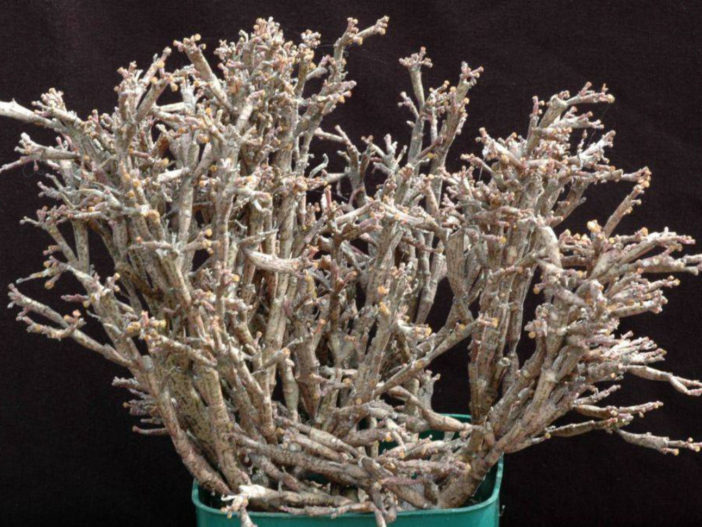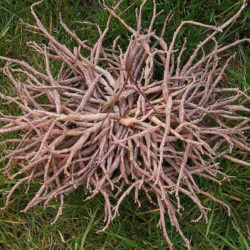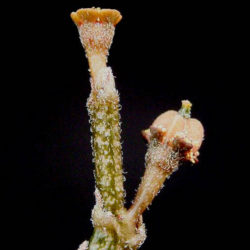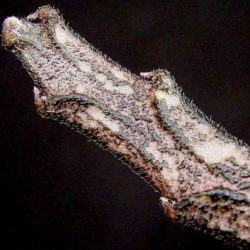Scientific Name
Euphorbia platyclada Rauh
Common Name(s)
Dead Plant, Dead Stick Plant, Dead Wood Plant
Synonym(s)
Euphorbia platyclada var. platyclada, Tirucalia platyclada
Scientific Classification
Family: Euphorbiaceae
Subfamily: Euphorbioideae
Tribe: Euphorbieae
Subtribe: Euphorbiinae
Genus: Euphorbia
Description
Euphorbia platyclada is an odd succulent subshrub with a small rootstock and leafless, somewhat flattened stems with an irregular scab-like texture. It grows up to 20 inches (50 cm) tall and looks like a dead plant, hence the common name. There are two forms, erect and prostrate. The freely-branching stems are waxy, usually pinkish or red-brown, with dark grey-green mottling.
Flowers are small, orange or brownish, and usually appear at the end of the summer. Fruits are capsules that disperse their seeds by capsule explosion.
Origin
Euphorbia platyclada is endemic to Madagascar. It occurs in subtropical or tropical dry forests.

Hardiness
USDA hardiness zone 9a to 11b: from 20 °F (−6.7 °C) to 50 °F (+10 °C).
How to Grow and Care
Euphorbias are very easy to care for. They require a little pampering to become established, but once they are, they are self-sufficient. In fact, more die from too much care and watering than from neglect.
Euphorbias need well-draining soil and lots of sunlight. They are not particular about soil pH but cannot tolerate wet soil. Unlike most succulents, Euphorbia does not handle long periods of drought well. It may need weekly watering during the summer. Water whenever the soil is dry several inches below the surface. Water deeply, but don't let them sit in wet soil, which can cause root rot. Add some organic matter or fertilizer to the planting hole. If you are growing them in containers or your soil is poor, feed them with a half-strength fertilizer monthly.
Euphorbia can be grown from seed, but they can be difficult to germinate (or even find). It is usually propagated by cuttings. This can be tricky because of the exuding sap. Rooting hormone is recommended with Euphorbias.
See more at How to Grow and Care for Euphorbia.
Links
- Back to genus Euphorbia
- Succupedia: Browse succulents by Scientific Name, Common Name, Genus, Family, USDA Hardiness Zone, Origin, or cacti by Genus
Photo Gallery
Click on a photo to see a larger version.


